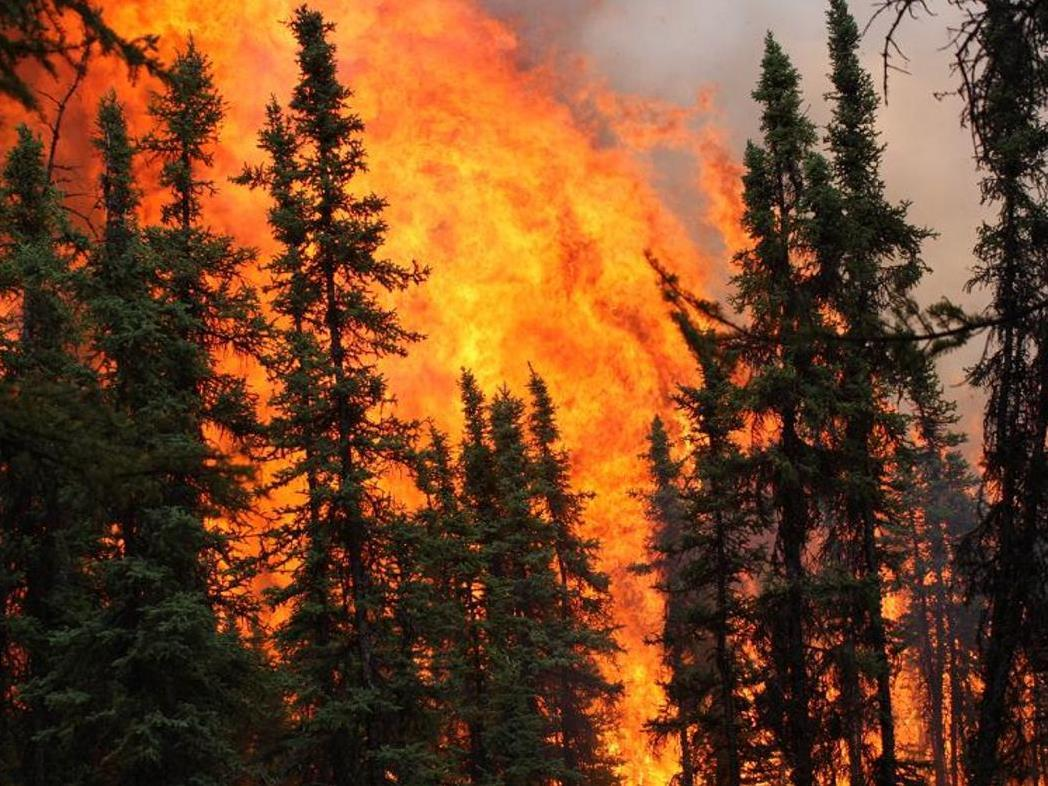Remote monitoring towers provide data that advance the understanding of boreal forest fires

On June 7, 2021, a new study on carbon monoxide and methane emission from boreal forest fires was published in Atmospheric Chemistry and Physics. Global Monitoring Laboratory scientists Arlyn Andrews, Colm Sweeney, and John Miller were co-authors of the paper and Global Monitoring Laboratory staff provided ongoing remote maintenance of the Carbon in Arctic Reservoirs Vulnerability Experiment (CRV) tower, which provided continuous high-resolution gas observations for this study.
Boreal forest fires influence the global carbon cycle and climate system by consuming aboveground and underground biomass and directly releasing carbon dioxide, other trace gases, and aerosols into the atmosphere. Previous studies have also shown that fire plumes from Alaska and western Canada can influence air quality over Nova Scotia, the south-central United States, and Europe.
This new research quantified emission factors of carbon monoxide and methane using ground-based observations from the CRV tower and identified at least 34 contributing fires in interior Alaska during the summer of 2015. The number of individual wildfires sampled in this study is comparable to the number of individual wildfires sampled in North American in previous studies.
Results suggested that smoldering combustion processes in North American boreal forest fires contribute more trace gas emissions than previous estimates derived from aircraft sampling. The time-series data and derived emission factors may provide a means to test models that integrate together fire processes, emissions, and regional atmospheric transport.
Emission factors convert fire consumption of dry biomass into emissions of specific trace gas species, such as carbon monoxide, methane, and carbon dioxide. Applying these values in fire emission models and comparing the model with observations can help improve the model accuracy and better evaluate how boreal wildfires impact climate and air quality.
Long-term monitoring from remote towers can potentially provide new information about wildfires in other ecosystems, integrating across day-night variations in fire behavior, across periods with different environmental conditions, and across multiple fires in different stages of growth and extinction.
More work is needed to combine tower and aircraft sampling to attain accurate estimates of the total budget of fire-emitted trace gases and aerosols.
The research was supported by the National Science Foundation Graduate Research Fellowship, NASA, and OAR's Climate Program Office. National Environmental Satellite Data and Information Service provided critical labor and infrastructure for the research.
